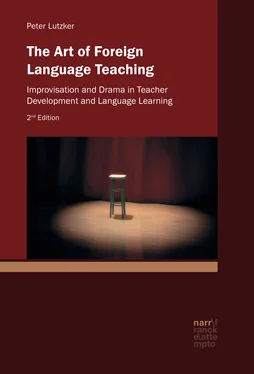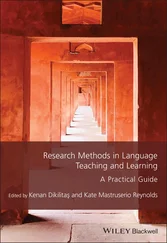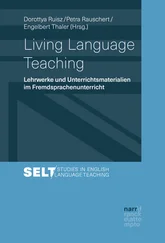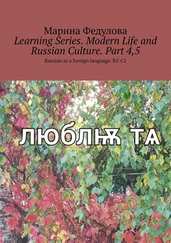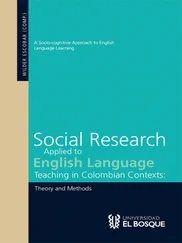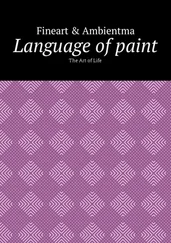Another element which must be taken into account in the context of the contextual framework is the relation of the participants to the researcher. I was well aware that a possible criticism of the study could be that participants of his English Week courses were invariably aware of my own role as one of those responsible for the organization and planning of the courses. Hence, there was a possibility of their responses being shaped by their knowledge of my own probable standpoint regarding the value of the work. Although I had hoped through the open nature of the research inquiry letter to encourage every type of response, this problem was, nevertheless, not completely resolvable. It thus became a crucial element in the research design that 26 of the 55 responses were from participants who had taken courses in the context of other in-service programs.
4.8 External Validity: The Representative Nature of the Data
In qualitative research the issue of internal validity is generally considered to be more crucial than external validity, since the goal of external validity, i.e. that a research study could be exactly replicated in another context by different researchers and still elicit the identical results, is not generally the aim of most qualitative research studies. However, with respect to the clowning courses the broad spectrum of data in conjunction with the extensive possibilities of time and space triangulation make the issue of external validity a relevant consideration.
A crucial issue which bears examining in this context is whether the language teachers who took the clowning course were representative of Steiner School English teachers, or instead, an atypical group of Steiner School teachers who tended naturally to this type of artistic course. This question can first be considered on the basis of the responses from the English Fortnights and the Baltic Seminar in which all the participants had to take this course. In the case of the English Fortnight this did not lead to any significant differences in what they wrote in comparison, for instance, to the English Week in which participants had chosen to take this particular course. However, in the case of the Baltic Seminar it is clear in the responses that many of the participants had clear reservations and questions about the work at the beginning. In general, their responses indicate that they as a group also initially experienced the most difficulties in the course. Significantly, their responses at the end were among the most effusive. In the English Week , there were some participants who were familiar with the courses through the presentations at the end of previous years and who thus had an idea of what they were choosing and others who were there for the first time. There do not, however, appear to be any marked general differences in the final responses of these two groups. Thus, the reasons why teachers took the course do not appear to have influenced how they later viewed it. In comparing the responses of participants from different countries who replied, it is also possible to conclude that their different forms of training and varied teaching traditions do not seem to have played a substantial role in the way they experienced the courses.
4.9 The Initial Hypothesis
The importance of expressing a clearly stated hypothesis in the context of a qualitative research study has often been stressed by researchers who have maintained that hypothesis–driven research, which has traditionally been seen as belonging more to the domain of quantitative research, can also have an important place in qualitative research in which verification, and not quantification is the goal.216 Qualitative researchers have argued that a standpoint implying that an hypothesis can only be proved or disproved by setting up rigorous standards of measurement, reflects a narrow view of what verification can mean. Adrian Holliday writes,
Hence, hypotheses are used in qualitative research which investigates a relationship between several entities. This essential nature of hypotheses does not have to be restricted to the controlled world of quantitative research. In qualitative research too there can be relationships which the researcher sets out to investigate in a systematic, though not quantifiable way.217
It lies in the nature of a hypothesis-driven empirical study that it occurs within the framework of deductive research: i.e. an initial hypothesis presents the starting point for the research, as opposed to an “open approach” in which a broad general inquiry presents the basis for the ensuing generation of hypotheses.218 The initial hypothesis upon which this empirical study was based can be formulated as follows:
The clowning and improvisation courses which Vivian Gladwell has conducted in the context of in-service teacher development for Steiner School language teachers have had significant effects on their personal and professional development. Such development may have included an enhanced openness and attentiveness, a heightened sense of empathy, a higher degree of presence and increased improvisational skills. At the same time, these courses have also played an important role in helping teachers to learn to address their own uncertainties, anxieties and mistakes in a more constructive and creative manner. It is postulated that this development may have occurred both in short-term as well as in long-term contexts.
The hypothesis is thus formulated in a manner which matches the accepted, formal standards of scientific research in terms of its being falsifiable, i.e. its defining qualities must be stated in a way that it (or parts of it) can it be clearly disproved and shown to be invalid.
5 Discovering the Clown Within: Background to Clowning Courses with Vivian Gladwell
5.1 Background: Vivian Gladwell and Bataclown
Vivian Gladwell was born in England in 1953. While studying Sociology at the University of London, he first discovered clowning. He later trained with the Bataclown in France and worked with them professionally for many years. In 1990 he founded the Clowning Institute Nose to Nose . He regularly gives clowning courses throughout Europe and North America for a wide range of professionals including actors, teachers, doctors and social workers. He also teaches English at the University of Toulouse.
The renowned French Bataclown group works in the tradition of theatre clowning associated with the school of Jacque Lecoq, based on improvisation and the mask. Lecoq’s work is considered seminal in the development of clowning, having its origins in the techniques of the Commedia dell’ Arte and differing markedly from the type of clowning allied to the circus tradition.219 In adopting Lecoq’s approach and techniques, Bataclown modified them insofar as they did not solely aim to train professionals, but also used these principles and methods in working artistically with people who did not intend to become clowns. In this context, they placed their emphasis not on first developing technique, as Lecoq had done, but on making authenticity the main focus of their work and only gradually moving towards technique.
Clowning in the tradition of Bataclown teaches people to improvise within the conventions of clowning, ‘protected’ by costumes and a red nose and, at the same time, encourages them to express exactly how they feel while improvising. This is an essential distinction between clowning improvisations and, for example, theatre improvisations which instead strive for a coherence and believability which are not required in clowning. In Gladwell’s words,
In theatre improvisations there is a tendency to try and be coherent in the role you play. So, if you play a king, in order to be believable in that role you need to have a degree of coherence. In clowning, it doesn’t matter if you are still believable or coherent because the moment you are incoherent or “out of role” it is still clowning…where you reveal how you feel about playing the role of the king, whether you are enjoying the role or not, whether you feel you are good at it. That twinkle in the eye that says to the audience: “Look I am having a great time here” is what clowning is about. It reveals what is underneath the convention of playing a role. So, say an actor has a hard time with imitating an Italian accent. If you are trying to be convincing you wouldn’t want your audience to know you were having a hard time because it would break the spell and they might not believe in the story or your role anymore. In clowning that is exactly what we want. We want to be taken in the story and yet we also know that the truth is that it is an actor playing a role. You are at the same time in the convention of the theatre and the truth. The twinkle in the eye reveals the truth and we all laugh because we recognize that truth.220
Читать дальше
